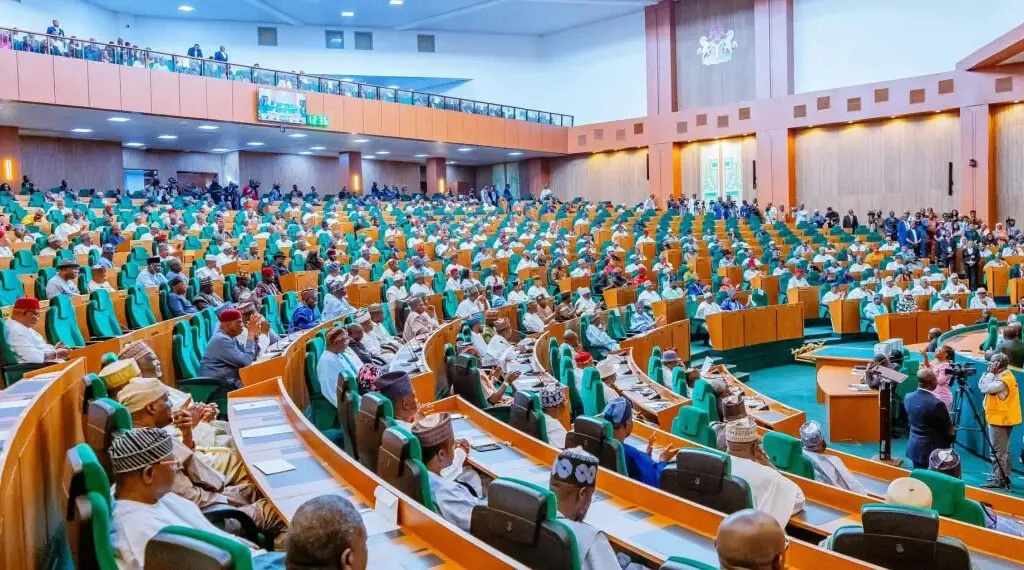 And in the third category are the set of institutions that facilitates welfare-oriented social impact, services and human capital development. Here, the public-private partnership becomes very critical as a capacity enhancement strategy the government must factor into the performance mode of its institutions.
And in the third category are the set of institutions that facilitates welfare-oriented social impact, services and human capital development. Here, the public-private partnership becomes very critical as a capacity enhancement strategy the government must factor into the performance mode of its institutions.
With the immeasurable technical support that the NESG is providing to government at the moment, reinforcement provided by a carefully accredited consortium within a programme management front office (PMO) framework will also be a good short-term arrangement. This should come on after MDAs capability review has been undertaken to develop a targeted performance improvement plan which should be implemented with every urgency to enable the government to competently implement its development agenda. This can then further be complemented by the setting up of an expert-led Service Delivery Unit in the Presidency, if it is not already in place.
The unit will be responsible for facilitating MDAs in planning their service delivery programmes and for handholding in the focusing of citizens demand side of their service charter that leverages carefully designed SERVICOM instruments and frameworks. The Unit will also create platforms for MDAs’ peer review to enable sharing, learning and benchmarking.
The second urgent action plan the government needs to take seriously in rejigging the capacity of the system is to thoughtfully, systematically and humanely purge the service of redundancies through the offloading of the chaffs to expand the grains. This is to be able to achieve, one, a significant reduction of personnel cost, two, to enable reinvestment of the efficiency savings as enhanced pay and incentives that could attract and retain talents to the service, and three, to significantly save the cost accruing from the system’s virtual dependence on the technical support provided by policy experts, consultancy firms, and development agencies which will always be required but now reprofiled within a win-win logic.
But one needs to sound a note of warning here so that the new administration will not also fall into the same tradition of benchmarking policy failures around downsizing and rightsizing curated by the institutional traps and conditionalities of the World Bank and the IMF. And this is even all the more that the government has commenced a wide-ranging forensic audit of the civil service that is meant to achieve two-sided cost of governance objective.
One, to determine the credibility of current payroll databases and validate staff numbers; and two, detect fraud that is being perpetuated in the payment procedures. What should be added is the correlative audit of staff numbers that targets the terrible phenomenon of redundancies which has a huge role to play in cost of governance containment. And, also important, in establishing staff number as part of the audit of the payroll. And this must be done in a way as to also account for, for instance, the ratio of doctors, policemen, teachers, and other professionals to the population within framework of global bench marks.
Downsizing and rightsizing cannot be taken for granted; even given the noble objective of cost containment it wants to achieve. It takes some delicate and sensitive policy intelligence not to allow a good corrective exercise to fall headlong into the usual reform trap that emasculate previous administration and undermine their governance achievements.
There are several things to note and issues to consider in order to make a success of rightsizing. The first is that the government must never make the mistake of making the bloated service strictly an issue of the size of the wage bill. It is a complex issue that also concerns deeper issues like reassessing the role of the state in developmental matter (for instance, making it more regulatory rather than that of the sole provider of services) and the strategic distribution of human resources within the system.
One should also not forget that the size of the service might equally be the function of the degree of centralisation of the function assigned solely to the federal government which overlooks the significance of constitutional devolution, as well as how past policies have not been able to achieve statutory deregulation that could aid efficiency.
But then, the issue of the wage bill also has a fundamental impact on the optimal functionality of the public service. But the real issue must be to consider any policy on reducing the public sector wage bill in line with how such a policy will weigh on a comparable framework with other sectors and other contexts. This is critical because the government has a significant competitor in the private sector, as well as other countries’ wage dynamics. The implication therefore is not just that the government’s wage bill is large, but that the government needs to focus on achieving a compensation package that is competitive, affordable, attractive and effectively link incentive and pay with performance.
The Tinubu government must therefore take seriously, in fashioning a wage and compensation package, the Hertzberg 2-factor theory that hygiene and motivation are crucial to achieving employee satisfaction and performance for productivity. Hygiene results from salary and incentives, while motivation derives from recognition in the workplace and how conducive the workplace is in every sense reinforcing to professionalism.
Ultimately, the government must never lose sight of the fundamental objective of achieving cost containment through rationalization, and that is the emergence of a smaller, flexible and efficient civil service that is not only re-professionalized but also possesses the adequate size and skill-competency composition that effectively and efficiently backstops government function at an optimal level required for democratic governance and service delivery.
Such a new bureaucracy must also be concerned with restoring merit as the basis for reconfiguring a competency-based HR practices and dynamics. This speaks in tandem with President Tinubu’s affirmation of the need for a government of national competence that can then cascade down to the gatekeeping needed by the public service to be filled with competent professionals who can be trusted to make policies work for democratic governance.
All the above is not rocket science. Institutional reforms have been carried out successfully all across the world, and they are often the difference between a state that is developmental and the one that is not. What ensures that difference is not the dearth of reform ideas, processes, procedures, paradigms and strategies which are available on a global basis, waiting to be efficiently adopted and adapted.
On the contrary, a state sets itself on the path of economic progress and infrastructural development when its leadership summons the political will to push reform agenda through its entire messy implementation trajectory to its logical end. This is what could make the Tinubu administration truly transformational. And this is exactly where my reform optimism lies.
Concluded
Prof. Olaopa is a retired Federal Permanent Secretary and Professor of Public Administration ([email protected])





